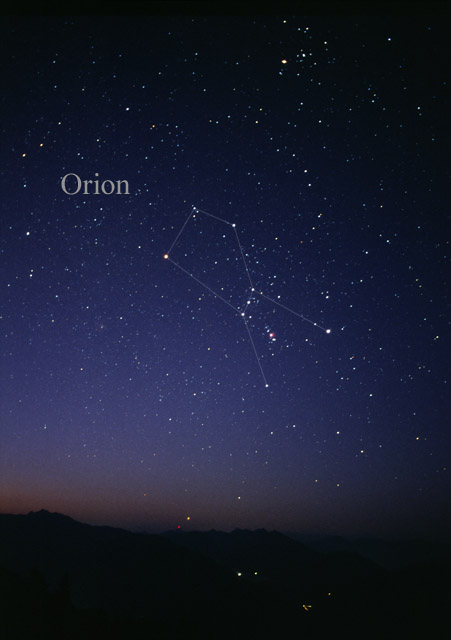Hypatia Alexandria from Santa Fe, CC BY 2.0 <https://creativecommons.org/licenses/by/2.0>, via Wikimedia Commons
It’s early January and even although the nights are short and the weather is cold and crisp it is the perfect time to wrap up warm and go look up at the night sky. For Astronomers we consider this cold stable air as ideal viewing conditions. In Tenerife we are lucky to be able to enjoy these sort of perfect conditions high up in the Teide national park we have low humidity and something called the inversion layer which is a layer of cold air that enhances viewing conditions.
As we look up at the night sky our star gazers are aware of a large distinctive constellation dominating the eastern sky. We are first drawn to the three vertical stars in a perfect line and then become aware of the small cluster and nebulosity just below and to the right of the three in line stars, Then there are the four bright stars in a rectangle surrounding the 3 stars and cluster and we can start to see what the ancient Greeks observed thousands of years ago,
This is probably the most well known and popular constellations in the winter sky Orion the hunter. Its one of the 88 modern constellations and was also included in the 48 constellations the astronomer Ptolemy listed in the 2nd century.
In Greek mythology Orion was a supernaturally strong hunter born the son of Euryale one of the three gorgon sisters and Poseidon the god of the sea. He boasted that he was stronger than any animal and could kill every animal on Earth. This boasting and threat angered Gaia the goddess of the Earth and she sent the Scorpion to kill Orion. This is why you never see Orion and the scorpion together in the night sky. Orion was revived from the scorpions venom by Opiuchus the Serpent Bearer who gave him an antidote this is the reason Opiuchus is hallway in the sky between Orion and Scorpion.
We at Stargazing Tenerife are closely associated with Orion and if you look at our guides T shirts you will see that our company logo is a graphic interpretation of Orion the hunter. Our six principle guides and our three founder members came together in the month of December and we celebrate this by using Orion the hunter the winters dominant constellation to represent our company. I will add that we do not subscribe to Orions boasting and are all kind animal lovers.
Orion is made up of 7 main stars its left shoulder is Betelguese the red giant that astrophysicists believe will be the next star to supernova, its right shoulder is Bellatrix its right foot is Rigel its brightest star Alpha Orion and its left foot is Saiph. The three stars in its belt are from lower left to upper right Alnitak, Ainilam and Mintaka. The sword below his belt is the Orion Nebula a large gaseous nebula an area of mainly Hydrogen and Helium gases where stars are born the nebula contains many new stars.
Further out from the main body of Orion to the right there is an arc of around a dozen stars that form Orion’s shield and to the left appearing to start from Betelguese are half a dozen stars in the shape of a club. The constellation covers an area of sky of 594 sq deg. It has 8 stars with a magnitude of +3 or brighter and is recognised as having 10 stars that contain planets.
Orion is also the radiant or part of the sky where the Orionids meteor shower appears to originate the meteors source is from the tail of Halley’s comet. The constellation is visible between the latitudes of +86 and -75 degrees. So from just below the North pole right down to 15 degrees above the south pole.
On Tenerife star gazing excursions we see the Orion constellation from late November to March as it progresses its journey across the night sky. In January it rises above Mount Teide from our viewpoint early in the evening and the Orion nebula or Messier 42 is one of the many deep sky objects we look at through our large computerised telescopes.
We hope to see you soon on one of our star gazing excursions
Written by Stehen Phelps




